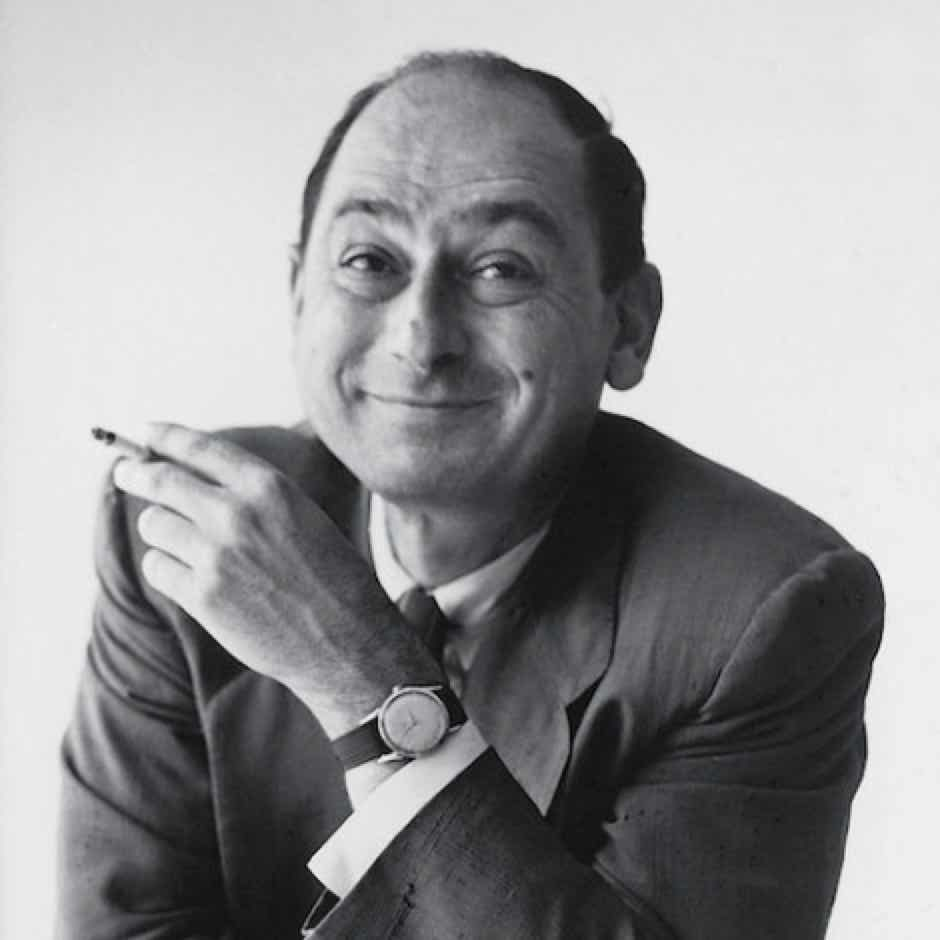
The clean linear aesthetic of the Nelson Bench reflects George Nelson‘s background as an architect. Like many design classics, the bench has multiple uses, readily serving as a surface for seating, storage or display functions. It is available in 2 dimensions.
Seat slatted wood in natural ash or black stained ash, natural finish.
Base black stained ash
Dimensions W122 x D46.9 x H35.3 cm / W183.7 x D46.9 x H35.3 cm
length 122 cm
natural ash
length 183,7 cm
natural ash
length 122 cm
black ash
length183,7 cm
black ash
George Nelson

George Nelson, born 1908 in Hartford, Connecticut (USA), studied architecture at Yale University. A fellowship enabled him to study at the American Academy in Rome from 1932 to 1934. In Europe, he became acquainted with the major architectural works and leading protagonists of modernism.
In 1935, Nelson joined the editorial staff of the 'Architectural Forum', where he was employed until 1944. A programmatic article on residential building and furniture design, published by Nelson in a 1944 issue of the journal, attracted the attention of D.J. DePree, head of the furniture company Herman Miller, Inc. A short time later, George Nelson took on the position of Design Director at Herman Miller. Remaining there until 1972, he became a key figure of American design; in addition to creating furnishings for the home and office, Nelson also convinced the likes of Charles & Ray Eames, Isamu Noguchi and Alexander Girard to work for Herman Miller.
In 1957, Vitra founder Willi Fehlbaum signed his first licence agreement with Herman Miller to produce furniture for the European market. During the ensuing decades of the collaboration with Vitra, a close friendship evolved between George Nelson and Rolf Fehlbaum, who later said about Nelson: 'No other prominent designer spoke as intelligently or wrote as coherently about design'. Nelson expressed his thoughts on design topics in numerous articles and eleven books; his seminal treatise 'How to See' was recently reissued in a new edition by Phaidon.
Along with his position as Design Director at Herman Miller, Nelson opened his own design office in 1947, George Nelson Associates, Inc., working together with such outstanding employees as Irving Harper, Ernest Farmer, Gordon Chadwick, George Tscherny and Don Ervin to create countless products and objects, some of which are now regarded as icons of mid-century modernism. His architectural work included numerous private residences. The Sherman Fairchild House (1941) attracted considerable attention, and his Experimental House exemplified his interest in prefabricated building and flexible floor plans.
George Nelson died in New York in 1986. His estate, which is held by the Vitra Design Museum, encompasses roughly 7400 manuscripts, plans, drawings, photographs and slides dating from 1924 to 1984. In 2008/09, the Vitra Design Museum mounted the exhibition 'George Nelson – Architect, Writer, Designer, Teacher.
Price Guarantee
Offering design at the right price is an integral part of our work. If you find the same item at a lower price at another retailer, delivery included, we will not only match it, but even offer you a better price.
How to take advantage of it?
We compare our prices every day with all authorized retailers in Europe. If nevertheless you find cheaper, contact us for a counter-proposal.
We must be able to verify that the item is authentic, new, perfectly identical (size, materials, color, etc.)
and that it is not part of a campaign or temporary destocking.
The valid basis is, for example, a current quote or a direct link to another retailer's website where the lower price is indicated. An email image is invalid, the original email must be forwarded.
The offer does not apply to orders already placed and cannot be combined with any of our other offers or promotions.
Ce site web utilise les cookies techniques pour fonctionner.
Vous pouvez les refuser, mais perdrez alors la possibilité d'acheter.
OK
Refuser